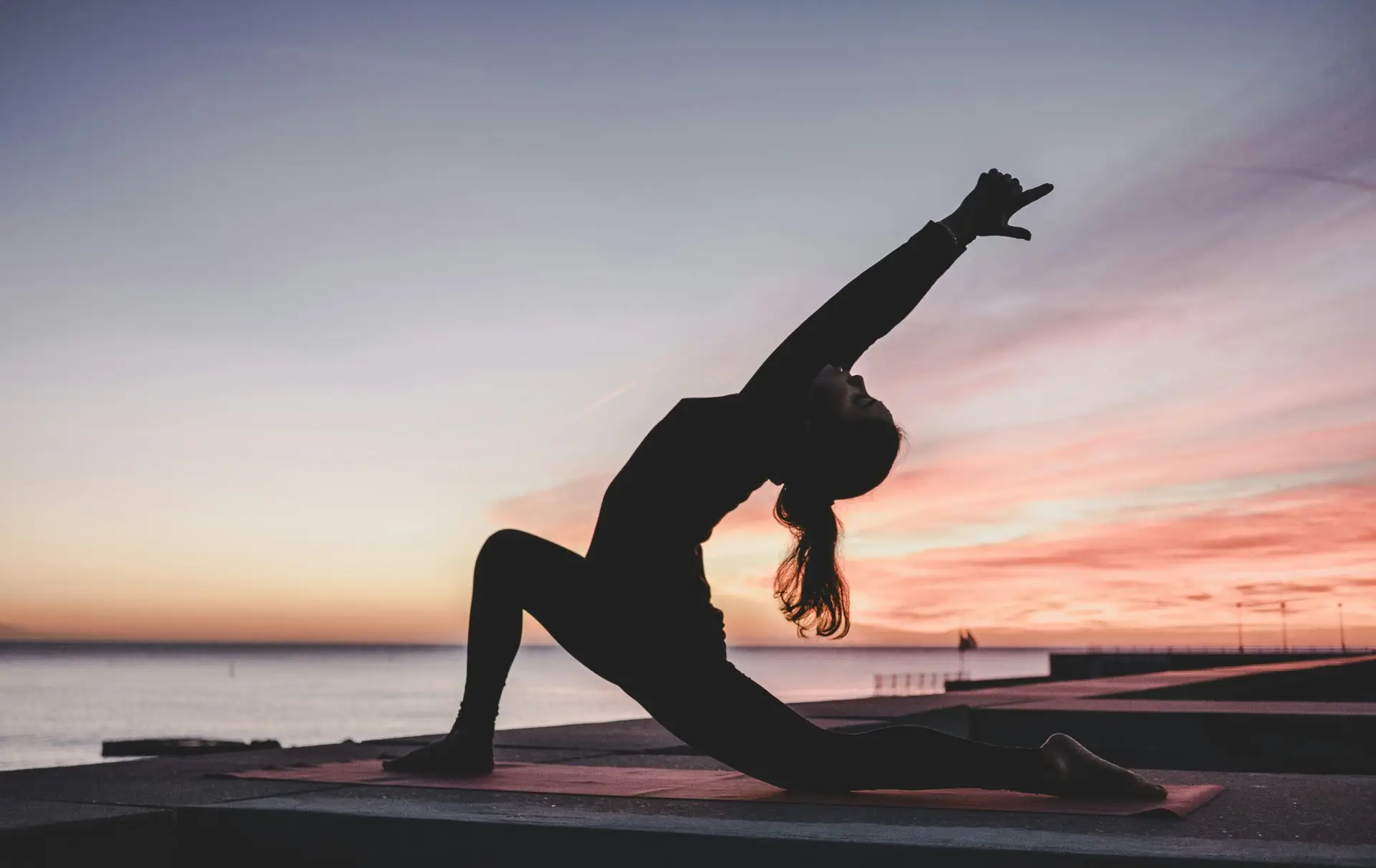Introduction to Yoga
Yoga, an ancient practice with roots in Indian philosophy, has evolved into a holistic system that integrates physical, mental, and spiritual elements. Dating back over 5,000 years, its origins can be traced to the Vedic texts, where it was initially conceived as a means to attain spiritual enlightenment. As centuries progressed, the understanding of yoga expanded, leading to the development of various schools and styles, each with its unique approach and emphasis.
The evolution of yoga is characterized by its adaptability, allowing it to resonate with different cultures and lifestyles. In the modern context, yoga is popularly recognized as a means of improving physical health, enhancing mental clarity, and fostering emotional resilience. The practice encompasses several key components, including postures (asanas), breathing techniques (pranayama), and meditation.
Asanas form the physical aspect of yoga, focusing on the alignment and strength of the body. These postures not only enhance flexibility but also promote overall well-being and stamina. Pranayama, on the other hand, refers to the breath control techniques that are essential in regulating the life force (prana) within the body. These techniques aid in calming the mind and preparing it for deeper meditation.
Lastly, meditation serves as the spiritual facet of yoga, guiding practitioners towards self-awareness and a sense of inner peace. It encourages one to delve into the depths of consciousness, fostering a profound connection between the mind, body, and soul.
In today’s fast-paced world, yoga stands as a formidable resource for those seeking balance and tranquility amidst chaos. Its holistic approach not only nurtures the body but also supports emotional and mental health, making it pertinent in addressing contemporary challenges.
Hatha Yoga: The Foundation of Practice
Hatha Yoga is widely regarded as the cornerstone of numerous yoga disciplines, providing practitioners with essential tools to cultivate physical strength and flexibility. The term “Hatha” in Sanskrit translates to “force,” reflecting the practice’s emphasis on physical exertion to prepare the body for deeper meditative states. By focusing on basic postures (asanas) and breath control (pranayama), Hatha Yoga creates a solid foundation that is particularly beneficial for beginners embarking on their yoga journey.
The fundamental principles of Hatha Yoga include alignment, balance, and mindfulness. Practitioners learn to engage their body systematically, ensuring that each pose is approached with care and intention. This principled approach promotes a harmonious connection between the mind and body, reducing stress and enhancing overall well-being. One of the primary benefits of Hatha Yoga is its capacity to improve flexibility. Through regular practice, individuals gradually increase their range of motion, which can alleviate tension and prevent injuries. Moreover, Hatha Yoga significantly contributes to building core strength, as many postures require stability and endurance.
Common postures associated with Hatha Yoga include Downward-Facing Dog (Adho Mukha Svanasana), Warrior I (Virabhadrasana I), and Tree Pose (Vrksasana). Each of these poses targets specific muscle groups while fostering balance and concentration. For those interested in getting started, it is advisable to seek out beginner-friendly classes or instructional videos that emphasize proper alignment and technique. Essential tools like yoga mats and props, such as blocks and straps, can greatly enhance your practice by providing support and stability.
As you explore Hatha Yoga, remember that the journey is just as important as the destination. Embrace the learning process, and allow yourself the time to develop proficiency in both postures and breath control.
Vinyasa Yoga: Flowing with Breath
Vinyasa Yoga is a dynamic and highly popular style of yoga that emphasizes the seamless transition between postures, which is synchronized with breath. This form of yoga has its origins in Ashtanga Yoga, but it has evolved into a distinct practice that appeals to practitioners of varying skill levels. One of the key characteristics of Vinyasa is the use of flowing sequences, allowing for a fluid movement that creates a sense of rhythm and continuity. In contrast to more static forms of yoga, such as Hatha, Vinyasa promotes cardiovascular fitness and enhances physical endurance.
The synchronization of breath and movement in Vinyasa Yoga serves both physiological and psychological functions. As practitioners flow through their sequences, they cultivate a heightened awareness of their own bodies, fostering a deeper connection between mind and spirit. This mindful approach to movement can lead to reduced stress, improved mental clarity, and an overall sense of well-being. By focusing on breath while transitioning between poses, individuals learn to maintain a state of presence, which can carry over into their everyday lives.
Common sequences in Vinyasa Yoga include the well-known Sun Salutations, which serve as a warm-up, and various standing, balancing, and seated postures that flow into one another. Each session may differ based on the instructor’s style and the specific sequence chosen, making Vinyasa an adaptable practice suitable for everyone. Integrating Vinyasa Yoga into one’s routine can be as simple as attending classes once or twice a week or incorporating shorter at-home sessions utilizing online resources.
Ultimately, Vinyasa Yoga offers an invigorating way to engage the body and mind, encouraging practitioners to explore their physical limits while finding calm through intentional breath control. As this practice becomes a regular part of one’s routine, the benefits of increased flexibility, strength, and psychological balance are readily apparent.
Ashtanga Yoga: The Eight-Limbed Path
Ashtanga Yoga represents a dynamic and structured approach to yoga, emphasizing discipline and commitment through a series of eight interconnected limbs, as outlined in Patanjali’s Yoga Sutras. This ancient practice is not merely a physical exercise; it also encapsulates a holistic path that addresses both physical and spiritual development. The eight limbs consist of Yama (ethical practices), Niyama (personal observances), Asana (postures), Pranayama (breathing techniques), Pratyahara (withdrawal of senses), Dharana (focus), Dhyana (meditation), and Samadhi (absorption or bliss). Each limb builds upon the previous one, creating a comprehensive framework for personal growth.
The structured nature of Ashtanga Yoga allows practitioners to progress methodically through a series of sequences that vary in difficulty. This level of organization makes it suitable for individuals who thrive under clear guidelines. Beginners start with the Primary Series, focusing on foundational postures that enhance flexibility and strength. As practitioners advance, they move on to the Intermediate and Advanced Series, which present greater challenges and promote deeper physical and mental resilience.
The practice of Ashtanga Yoga requires a significant degree of discipline, making it essential for those who wish to cultivate perseverance and self-control. By adhering to a regular practice schedule, individuals often find improvements in other areas of their lives, including emotional well-being and stress management. Moreover, the incorporation of breath with movement fosters a meditative experience, allowing participants to develop mindfulness and concentration.
To approach Ashtanga Yoga effectively, it is advisable for practitioners to seek guidance from experienced instructors, especially when navigating its demanding sequences. By doing so, individuals can ensure proper alignment and technique, reducing the risk of injury while enhancing the overall experience. Ashtanga Yoga remains a transformative journey that harmonizes physical prowess with spiritual insight, encouraging a profound connection between mind and body.
Bikram Yoga: The Hot Approach
Bikram Yoga, founded by Bikram Choudhury in the early 1970s, is a dynamic style of yoga that is practiced in a heated room, typically set at 105°F (about 40°C) with 40% humidity. This unique environment is designed to enhance the yoga experience, promoting detoxification and improving overall flexibility. The practice consists of a specific sequence of 26 postures and two breathing exercises, each strategically chosen to provide myriad physical and mental benefits.
The science behind Bikram Yoga lies in its ability to warm the body and muscles, allowing for deeper stretches and greater range of motion. This heat facilitates the removal of toxins through sweat, which can leave practitioners feeling rejuvenated and energized. Regular practice is believed to improve flexibility, increase strength, and enhance balance, all key components in achieving physical well-being. Additionally, the mental discipline fostered during the practice contributes to reduced stress levels and improved focus.
While the benefits of Bikram Yoga are compelling, it is essential for beginners to approach this practice with caution. The high temperatures can be challenging, leading to dehydration or overheating if proper precautions are not taken. Beginners are encouraged to stay hydrated before, during, and after class and to listen to their bodies. It is advisable to take breaks as needed and seek guidance from instructors on posture alignment and modifications.
For those looking to explore Bikram Yoga, finding the right studio is crucial. Potential practitioners should seek out certified Bikram instructors and studios that adhere strictly to the discipline’s guidelines. A supportive environment can significantly enhance the overall experience, ensuring that individuals receive appropriate instruction and encouragement as they embark on their Bikram journey.
Yin Yoga: The Art of Stillness
Yin Yoga is a distinctive form of yoga that emphasizes stillness and relaxation through long-held, passive stretches. Unlike more vigorous yoga styles that focus on building strength and flexibility, Yin Yoga invites practitioners to embrace a slower pace, promoting a sense of calm and introspection. This practice centers on holding poses for extended periods, often ranging from three to five minutes, which allows the body to surrender into the stretch and encourages the release of tension in both the body and mind.
One of the key philosophies behind Yin Yoga is its contrasting nature to more dynamic styles, such as Vinyasa or Ashtanga. While these more active practices engage the muscles and promote cardiovascular benefits, Yin Yoga targets the connective tissues, such as ligaments, joints, and fascia. This focus on deeper structures helps to enhance joint health and mobility, which is particularly beneficial for individuals suffering from stiffness, arthritis, or chronic pain conditions.
The benefits of Yin Yoga extend beyond physical health; the long-held poses encourage mindfulness and relaxation, creating an opportunity for practitioners to cultivate a deeper awareness of their thoughts and emotions. This meditative aspect of Yin Yoga fosters mental clarity and emotional balance. As practitioners engage in stillness, they can experience profound states of relaxation and heightened mindfulness.
For those interested in practicing Yin Yoga at home or in a class setting, using props such as bolsters, blankets, and blocks can significantly enhance the experience. These tools support the body, allowing for greater comfort and deeper releases in poses. Some recommended poses include the Butterfly, Dragon, and Sphinx, which target key areas for effective stretching. Whether in a class environment or alone at home, integrating Yin Yoga into your practice can lead to a harmonious balance of both body and mind.
Comparative Analysis of Yoga Types
Yoga is a diverse practice that encompasses various styles, each with its unique approach, philosophical background, and intended benefits. Understanding the distinctions among these five popular types of yoga—Hatha, Vinyasa, Ashtanga, Bikram, and Kundalini—can significantly influence practitioners in their pursuit of personal growth and wellness. This comparative analysis aims to highlight the key differences, which will assist individuals in selecting the yoga style that aligns with their personal goals and physical capacities.
Hatha yoga serves as a foundational practice, primarily focusing on physical postures (asanas) and breathing techniques (pranayama). It is ideal for beginners due to its slower pace, allowing practitioners to develop body awareness while building strength and flexibility. Conversely, Vinyasa yoga emphasizes fluid transitions between poses, often synchronized with breath. This dynamic approach promotes cardiovascular endurance and may be more suited for those seeking a vigorous workout.
Ashtanga yoga is a more structured style, consisting of a set sequence of asanas practiced in a specific order. This tradition demands discipline and commitment, making it more appropriate for advanced practitioners interested in building strength and flexibility over time. On the other hand, Bikram yoga is known for its distinctive practice in a heated room, promoting detoxification and flexibility. While its intensity may be appealing to some, it may not be suitable for everyone, particularly those sensitive to high temperatures.
Finally, Kundalini yoga combines physical postures, breath control, and meditation to awaken spiritual energy. Its focus on the mental and spiritual aspects of yoga sets it apart from the more physical styles, making it ideal for individuals seeking a holistic approach to self-awareness and transformation. By evaluating these styles based on their focus areas and intended benefits, practitioners can make informed decisions that cater to their specific health and wellness objectives.
Integrating Yoga into Daily Life
Incorporating yoga into daily life can significantly enhance overall well-being and mindfulness, regardless of the type practiced. To begin, establishing a routine is essential. Devote a specific time each day to practice, whether it is in the morning to energize the body or in the evening to unwind. Consistency in practice not only helps in developing discipline but also allows the mind and body to anticipate yoga as a part of daily life.
Creating a conducive space for yoga is equally important. Designate an area in your home that is quiet and free from distractions. This can be enhanced with calming elements such as candles, a yoga mat, and perhaps some personal touches like inspirational quotes or plants. A dedicated space can enhance focus during practice and make the transition into yoga more seamless and enjoyable.
Finding resources to support your yoga journey is crucial. Online classes offer flexibility and the opportunity to explore various styles at your own pace. Alternatively, community studios can provide structured environments, personalized feedback, and the social aspect of practicing alongside others. Both options can be beneficial in diversifying your yoga experience and keeping motivation high.
Integrating yoga with other physical activities increases its benefits while providing a more rounded approach to fitness. Activities such as running, cycling, or swimming can be enhanced by yoga, focusing on flexibility and strength that complement traditional workouts. Additionally, blending practices such as meditation or breath work fosters mindfulness, enriching your yoga experience and daily life as a whole. Mindfulness serves as a reminder to remain present, helping one navigate daily stressors with a sense of calm and clarity.
Conclusion and Final Thoughts
In exploring the five types of yoga—Hatha, Vinyasa, Ashtanga, Iyengar, and Kundalini—it becomes evident that each style offers distinct benefits, catering to various preferences and goals. Hatha yoga emphasizes foundational postures and controlled breathing, making it an excellent choice for beginners. Vinyasa introduces a more dynamic flow, fostering a sense of movement and connection. Ashtanga, with its rigorous sequence, appeals to those seeking a challenging physical workout, while Iyengar focuses on precision and alignment, benefiting practitioners aiming for deeper understanding and flexibility. Lastly, Kundalini yoga combines physical movement with spiritual practice, offering a holistic approach to personal growth.
These diverse practices not only enhance physical strength and flexibility but also contribute significantly to mental clarity and stress reduction. As one delves into each type, they may discover unique aspects that resonate deeply, encouraging regular practice and exploration. The journey of yoga is profoundly personal and ongoing; it’s about finding the right balance between body, mind, and spirit. Individuals are encouraged to engage with various styles and seek out classes, workshops, or instructors that align with their interests and goals.
As you consider starting or expanding your yoga practice, remember that the most beneficial style is the one that feels right for you. Your exploration may lead you to new insights about yourself and your needs. Whether you seek relaxation, enhanced fitness, or spiritual growth, embracing the variety of yoga allows for a rich journey of self-discovery and well-being. Take the first step today, and enjoy the enriching experience that yoga can offer to your life.






+ There are no comments
Add yours